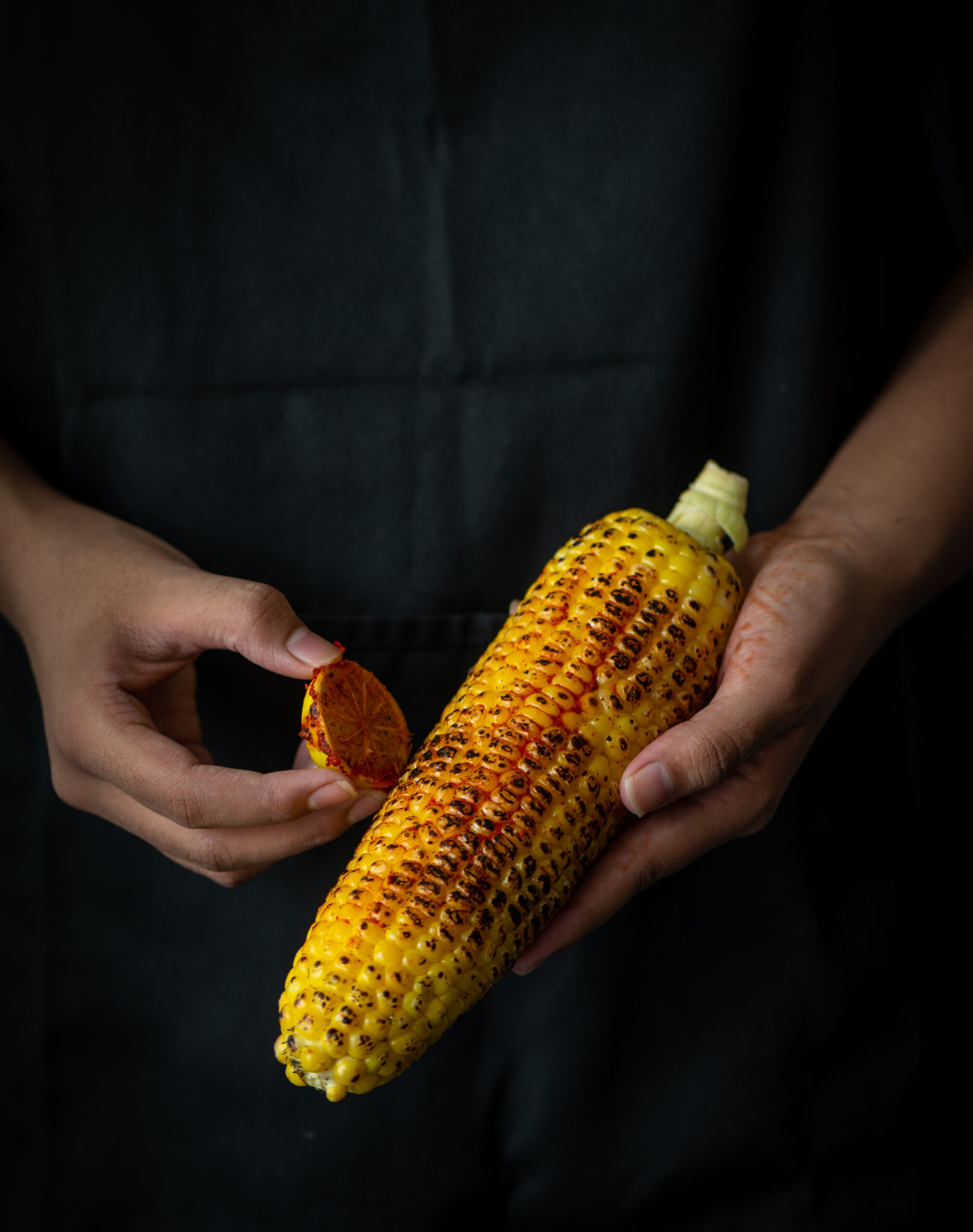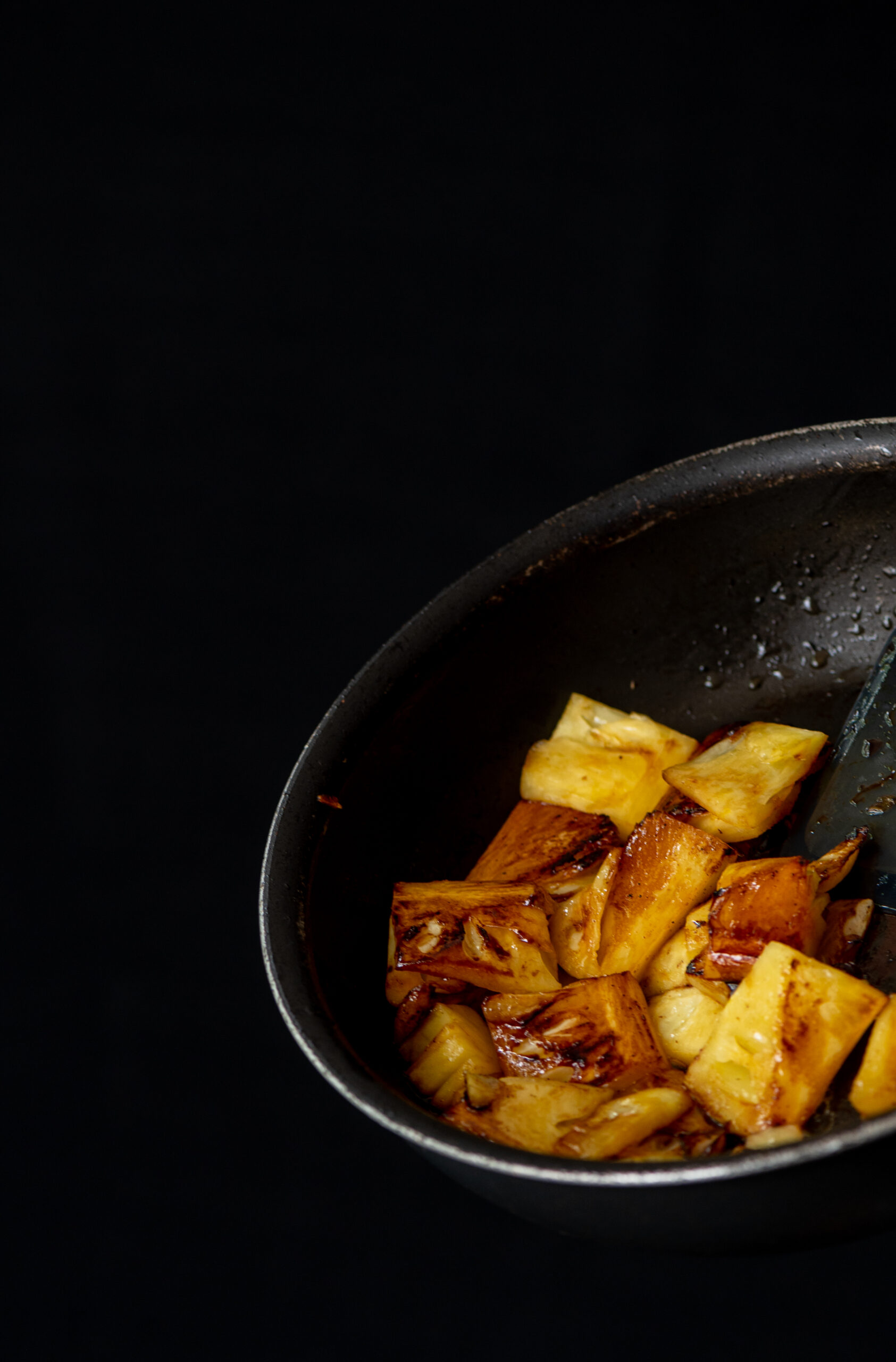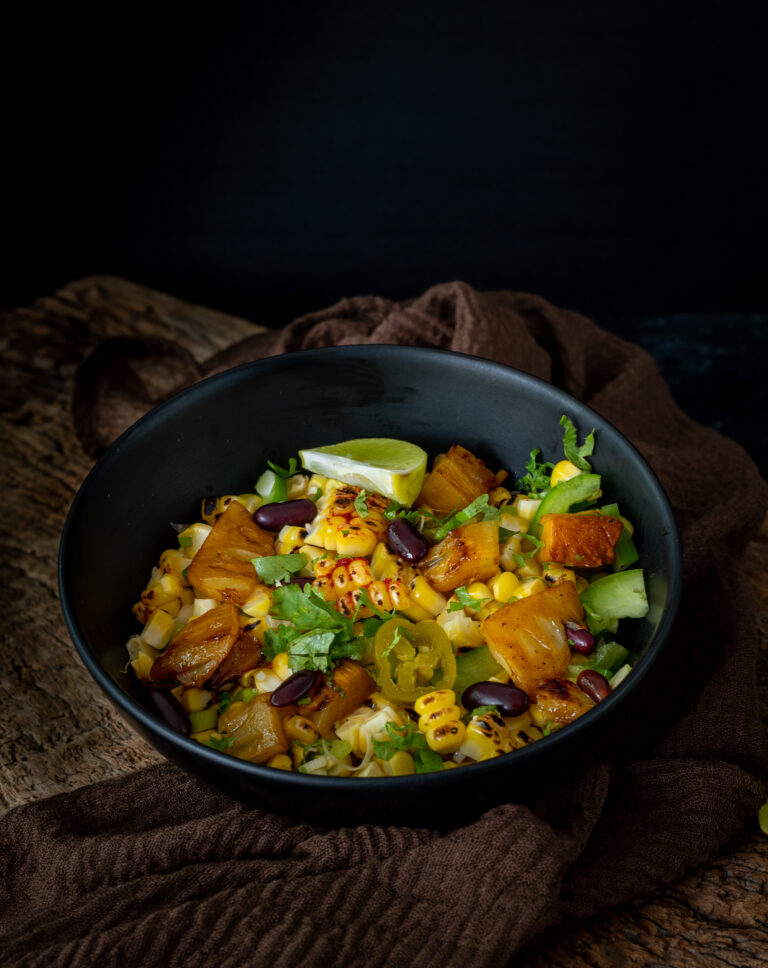With the fruit being in season, a wonderful meal of Thai-style pineapple rice led to an equally delicious pineapple curry, as you may have enjoyed recently too. I’m delighted to conclude this recipe series with a Mexican-style pineapple salad that I hope you’ll be just as excited by! As I had mentioned in one of the previous posts, I often grill pineapple for dessert. If you already have cut pineapple on hand, as I do with the abundance of it on the market right now, it’s so easy to do. As I was preparing some the other day, it occurred to me that grilled pineapple could make a perfect salad ingredient. In the magical way that food does, the idea transported me back to travels in South America, and I knew just how to prepare the dish.
I feel like I mention this in pretty much every blog post, but it’s true: I’ve been consuming a low-carbs menu for some months now, and am on a constant quest to diversify it. Salads are a reliable way to do so, and I’m always looking for new methods of preparing dishes in this category. You can turn this salad into a more complete meal by adding black or brown rice to it, which will fill you up while also being more nourishing than white rice. As an aside, if you’re a fan of black rice, be sure to try out this sticky rice and mango pudding from my archives. Also, while we’re on the subject of Mexican-inspired dishes, do try my peach salsa and Mexican-influenced Buddha Bowl recipes out too!
Despite my carbs-free diet, which I abide by as much as I can, I have also been trying to be kinder to myself about slipping off the bandwagon. Attempting to inculcate a mindset of judging my own food choices less is a work in progress, but it’s also a matter of practice. I know many of us struggle with this, which is why I’m sharing my own efforts to strike a balance. So nowadays, instead of chastising myself because a certain item or an extra helping may impact my health negatively, I am telling myself: “This will nourish me and give me joy”. Rather than eat something rich while feeling miserable and guilty about its sugar or carb quotient, which reduces my pleasure in the food or beverage itself, I am making it a point to mindfully enjoy it. This is a better attitude than self-criticism. It also helps you moderate your diet when you look at all parts of it the same way, rather than only the parts of it that you consider indulgent. Moderation in greens, moderation in goodies, and so on. It’s perfectly okay to eat what you’d like to eat – just eat it in the portions that are best for you.
This salad, as nutritious as it is, began with just such a spark of choosing joy over judgment. Of course I could have eaten the pineapple raw, but grilling it brought out flavours to the fruit that it wouldn’t have gotten to experience otherwise. Then, warm memories of a trip to Mexico embellished the rest of the recipe in my head: corn, jalapeños, kidney beans and chipotle sauce found their way into it. The result? Delicious, craving-satisfying and loaded with nutritional value even while it also packs a punch in the taste department.
One of the things I love about this dish is that while it’s internationally-inspired, the ingredients are locally grown or easily available. This gave me the idea of not just grilling the pineapple, but also giving the corn the Indian street food treatment. I wanted to bring the flavour of the wonderful roasted corn that we get at beaches all over India into the dish too, so I added some lemon and chilli powder and prepared that separately.
With the five year anniversary of this blog approaching (do follow me on Instagram for some celebratory fun soon!), I’ve been thinking about the broad range of recipes covered here, and I noticed that one of the things that many recipes have in common is that you can cook them no matter where you are. The ingredients used are largely simple and widely available, and the substitutes you can use to make them local or seasonal for you should be pretty intuitive. For instance, for this recipe, I found and ordered chipotle online, to add a bit of authentically Mexican flavour. If you’re unable to source it yourself, using paprika – which incidentally also originated in Mexico but which is widely available in supermarkets in India and abroad – will easily create the ideal dressing alternative. As I say often: good cooks always innovate, with what’s in reach!


Mexican-Style Pineapple Salad
(Yield: Serves 2)
1 medium-sized pineapple
⅓ cup finely chopped spring onion
2 tablespoons chopped jalapeños
½ cup kidney beans (rajma)
1 roasted whole corn
¼ cup coriander leaves
¼ cup finely diced bell peppers
Dressing
Juice of 1 lemon
1 teaspoon taco seasoning
1 teaspoon chipotle chilli (substitute: paprika)
Salt to taste
1 teaspoon olive oil
Slice the clean pineapple into circles. Grill approximately 2 cups of chopped slices in the oven or on a pan until charred. Allow to cool, then cut into small pieces and add to the bowl. Then, add the remaining vegetables.
Mix the dressing ingredients in a cup and pour over the assembled salad. Serve with some crunched-up nacho chips. If you have some fresh avocado, or some guacamole, these will also make a perfect accompaniment.
The nacho chips that I sprinkled over the salad evoked the texture of the maida-based tostada bowls that I’ve enjoyed similar Mexican salads in while travelling in the United States. Scrumptious and crispy, the bowl is a treat to eat along with the salad and the guacamole that is customarily served. While I know how it’s made, I don’t have a mould to make them with, and I’m wondering how to improvise. Would you have any suggestions? I’d love to scoop some of my Mexican-style pineapple salad into a homemade tostada bowl next time, and enjoy that crunchiness too!


